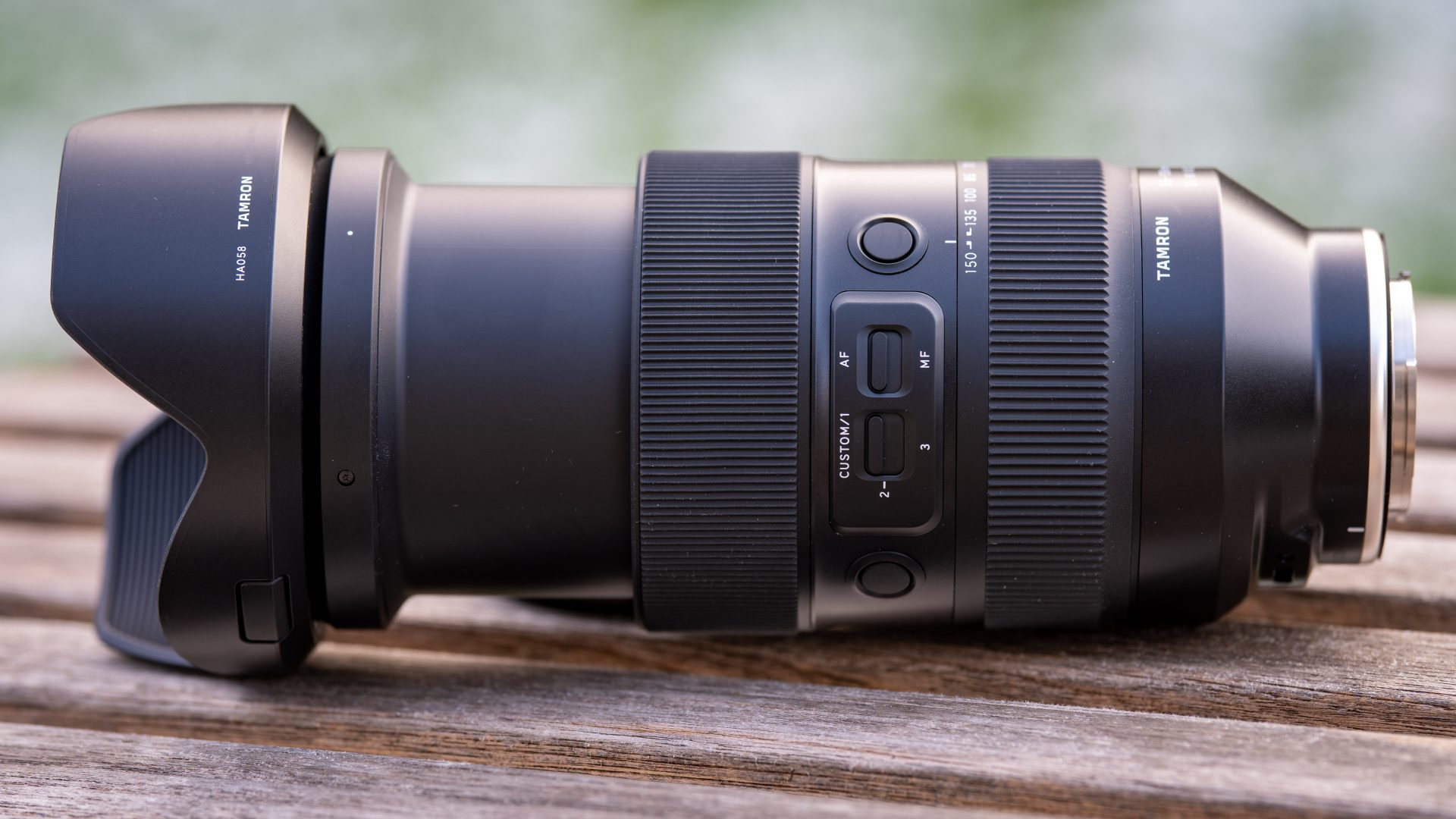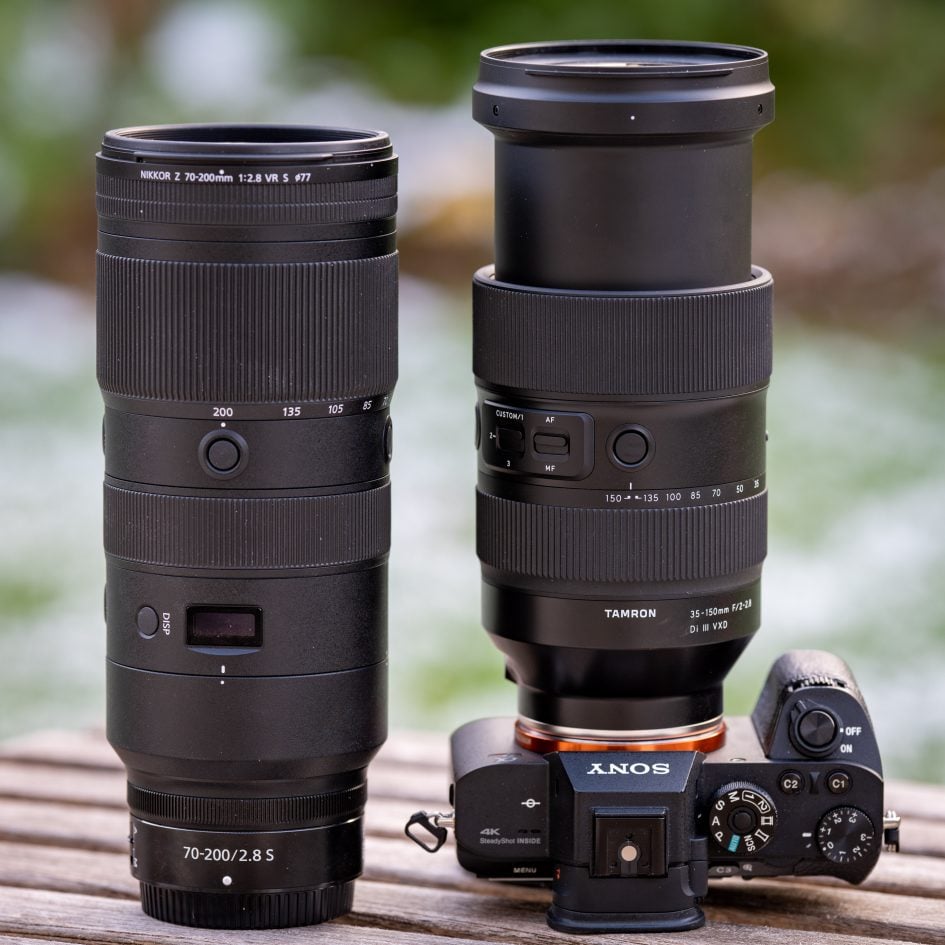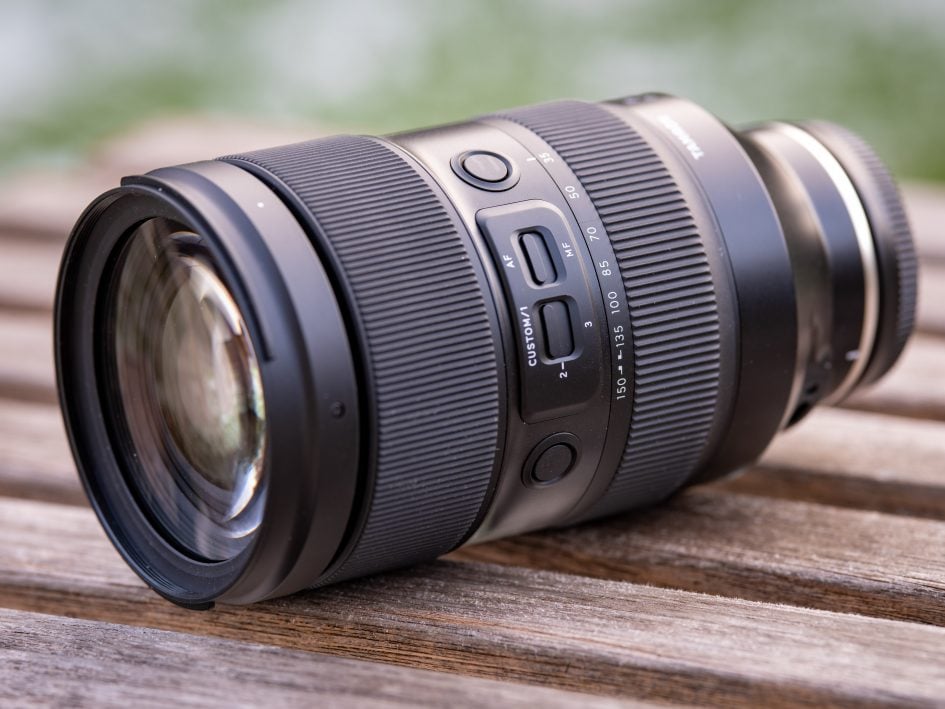Tamron 35-150mm f2-2.8 Di III review
-
-
Written by Thomas
Intro
The Tamron 35-150mm f2-2.8 Di III VXD (model A058) is a unique large aperture all-round zoom designed for Sony’s Alpha mirrorless cameras and corrected for full-frame sensors. Announced in September 2021, its coverage overlaps to a large extent with the Tamron 28-75mm f2.8 Di III and 70-180mm f2.8 Di III plus it offers a brighter focal ratio at the short end. Complement the new lens with Tamron’s 17-28mm f2.8 Di III RXD and 150-500mm f5-6.7 Di III VC and you’ve got a 29x zoom-range covered with only a small gap between 28mm and 35mm focal length.
Tamron already has an 35-150mm zoom in its line-up: but the 35-150mm 2.8-4.0 Di VC OSD is an older DLSR design which is one stop slower and only available for Nikon F and Canon EF-mount. In their new lens Tamron foregoes optical image stabilization relying solely on the body based stabilization of modern mirrorless cameras. The lens is fully weather-sealed including fluorine coating on the front lens and Tamron added a custom switch plus focus set button and USB-C port to make the lens configurable via computer and Tamron’s new Lens Utility (“TLU”). The lens is pretty compact at 16cm (6.2in.) length without lens hood but quite heavy at almost 1.2kg (2.6 lb.).
The Tamron 35-150mm f2-2.8 Di III is priced at 1799 EUR / 1899 USD / 1599 GBP and so far only available for Sony E-mount. But Tamron has announced that they are working on Z- and RF-mount versions of their lenses.
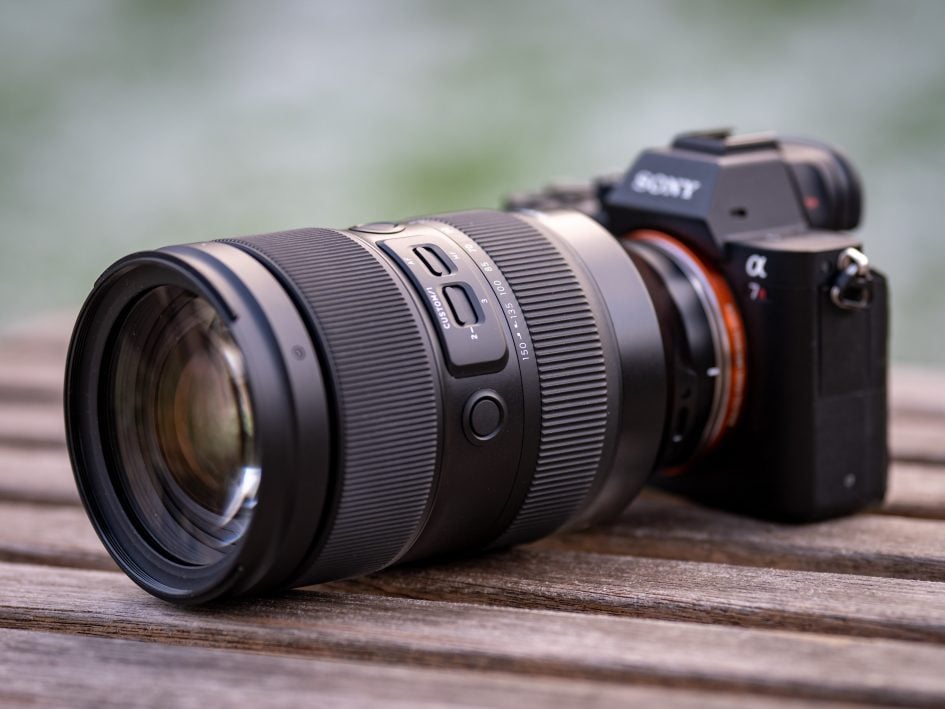
Facts and features
Let’s compare the Tamron 35-150mm f2-2.8 Di III (“Tamron 35-150” for short) to the combination of Tamron’s 28-75mm f2.8 Di III G2 (“Tamron 28-75 G2”) and 70-180mm f2.8 Di III (“Tamron 70-180”). As usual I’ve rated the features with a [+] (or [++]), when it’s better than average or even state of the art, a [0] if it’s standard or just average, and [-] if there’s a disadvantage.
Size (diameter x length): 89 x 158mm (3.5 x 6.2in.) plus 37mm for the lens hood (106mm diameter). The Tamron 28-75 G2 is 76 x 118mm + 28mm lens hood, the Tamron 70-180 is 81 x 149mm + 46mm lens hood. All lenses extend when zoomed to their longest focal length: The Tamron 35-150 extends to 239mm, the Tamron 28-75 to 164mm, the Tamron 70-180 to 224mm length (all three incl. lens hood). [0]
Weight: 1165g (2.6 lb.) plus 42g for the lens hood. The Tamron 28-75 G2 weighs 537g + 27g lens hood, the Tamron 70-180 is 800g + 46g lens hood. This gives a total weight of 1410g for the Tamron 28-75 G2 + 70-180 (incl. lens hoods) which is 203g heavier than the Tamron 35-150. But individually the Tamron 35-150 is quite heavy which can be clearly felt in comparison to the Tamron 70-180. [0]
Optics: The Tamron 35-150mm f2-2.8 Di III is a pretty complex design with 21 elements in 15 groups including 4 special dispersion elements and 3 aspherical elements. The other two optical designs are slightly less complex. All three Tamron lenses have fluorine coating at the front lens to repel water, dust, and dirt and make cleaning easier. [+]
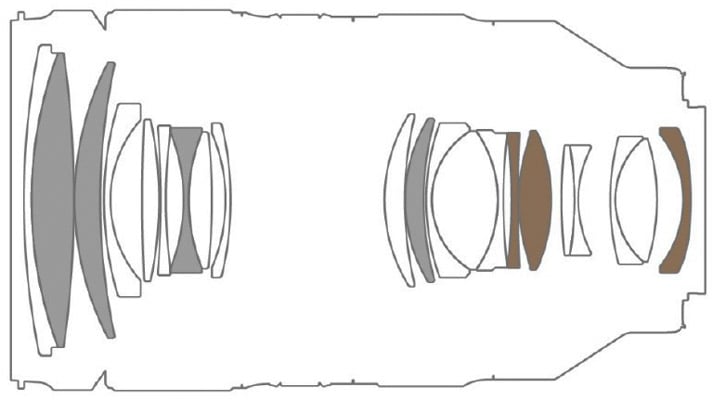
Focal ratio: The Tamron starts with a f2.0 focal ratio at the short end which is one stop brighter than one would normally expect. It’s f2.2 at 41mm, f2.5 at 61mm, f2.8 from 81mm focal length onwards. Both the Tamron 28-75 G2 and 70-180 have a constant focal ratio of f2.8. [+]
Closest focus distance is 0.30m (1.0ft.) with a magnification of 1:4.7 and a working distance of 0.11m (4.3in.) at 35mm focal length. At 150mm focal length maximum magnification is 1:5.1 which results in a much longer working distance of around 0.56m (1.8ft.). The Tamron 28-75 reaches a larger maximum magnification of 1:2.5 at 28mm focal length and 1:3.6 at 75mm. The Tamron 70-180 even achieves 1:1.8 at 70mm focal length and 1:4.1 at 180mm. The Tamron 35-150 achieves a magnification of 1:10 at its longest focal length at 1.53m (5ft.) distance. [0]
Use with teleconverters: No, neither of the Tamron zoom lenses can be used with Sony’s teleconverters. [0]
Filter-thread: 82mm. The Tamron 28-75 G2 and 70-180 take 67mm filters. [0]
Image stabilization: None of the three Tamron zoom lenses in this comparison have optical image stabilization built in. They rely on the body based stabilization of modern mirrorless cameras. [0]
Autofocus: All lenses in this comparison offer autofocus with built-in focus drive. Manual-focus override is by simply turning the dedicated focus ring at the front of the lens. The action of the focus ring on the Tamron 35-150 and Tamron 28-75 G2 can be switched via Tamron’s lens Utility (TLU) between the usual variable gearing or linear gearing and the direction of the ring can be reversed. This makes smooth focus pulling for videographers much easier. [+]
All lenses in this comparison cover full frame sensors or can equally be used on a cropped APS-C camera body. [+]
Price: The Tamron 35-150 comes at a recommended retail price of 1799 EUR (incl. 19% VAT) / 1899 USD / 1599 GBP which makes the lens quite expensive. But buying both the Tamron 28+75 G2 at 949 EUR / 899 USD / 849 GBP plus Tamron 70-180 at 1149 EUR / 1099 USD / 1049 GBP is about 300 EUR / 100 USD / 300 GBP more expensive than the Tamron 35-150. [0]
The Tamron 35-150 comes without a pouch or tripod mount but the reversible lens hood is included and has a lock to prevent it from accidentally falling off. The Tamron 28-75 G2 and 70-180 also come without pouch or tripod mount and their lens hood does not have a lock. [0]
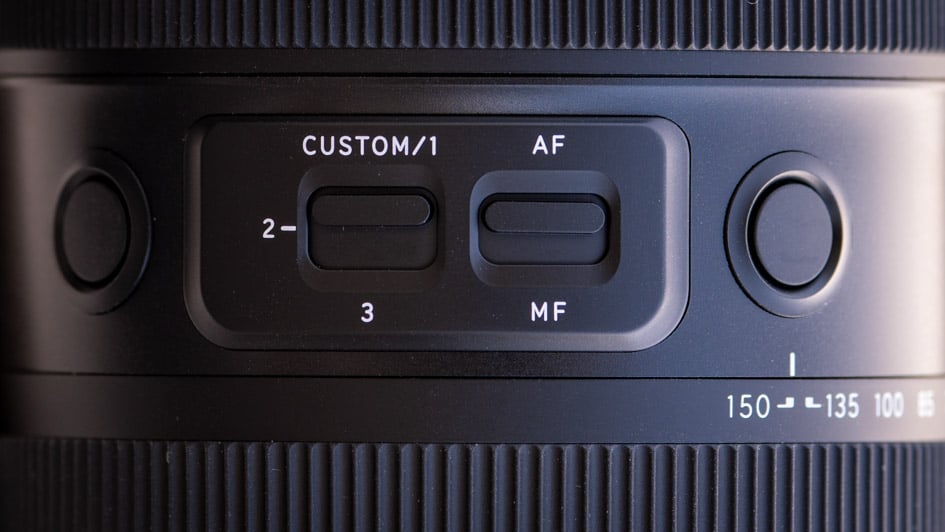
Aperture ring and other control elements: None of the Tamron lenses in this comparison has a dedicated aperture ring. But with Tamron’s Lens Utility (TLU) you can connect a computer to the lens and assign the focus set buttons on the Tamron 35-150 (and Tamron 28-75 G2) to switch the focus ring to operate the aperture. For connecting computer and lens only a USB-C cable is required – no need to buy the TAP-in Console/USB docking station which older Tamron DSLR lenses needed. You can also assign other functions to the focus set buttons apart from the usual focus preset e. g. make the focus automatically shift between two focus positions A and B or assign a function from the camera body. On the Tamron 35-150 an additional custom switch allows three different settings for the focus set buttons and focus ring. [+]
Sealing: All three lenses have a rubber grommet at the lens-mount plus further special weather-sealing throughout the construction. [+]
At a score of 0[-]/8[0]/6[+] the Tamron 35-150mm f2-2.8 Di III looks like a well balanced design with no real downsides. It is certainly not a light lens and the price seems a bit on the high side. But it starts at a focal ratio which is one stop brighter than usual and covers a 4.3x zoom range from moderate wide-angle to telephoto reach in one relatively compact design. Its focus ring and focus set buttons are thoroughly customizable without the need for buying a USB dock and the lens is well sealed against the elements. My only gripes are the missing tripod mount and the relatively meager maximum magnification of around 1:5.
Compared to the combination of Tamron’s 28-75mm f2.8 Di III G2 plus 70-180mm f2.8 Di III the Tamron 35-150mm f2-2.8 Di III saves quite a bit of volume in your photography bag and is a bit lighter and less expensive too. Plus it has the advantage of being brighter at the short end and puts away with the need to swap lenses which can net you a shot which you’d have otherwise missed. For that you give up 7mm on the wide end, 20% more reach on the long end, and better close-up capabilities.
Two telephoto zoom lenses
Above: Nikon Z 70-200mm f2.8 VR S (left), Tamron 35-150mm f2-2.8 Di III (right,)
Coverage
With its 4.3x zoom-range the Tamron 35-150 offers quite a bit more coverage than one of the usual large aperture trinity zoom lenses of 24-70mm or 70-200mm focal length. But with two trinity zoom lenses you cover a wider zoom-range than with the Tamron 35-150 alone. See the following comparison of the Tamron 35-150mm f2-2.8 Di III with a 28-75mm and 70-200mm zoom lens:
Above: Tamron 35-150mm f2-2.8 Di III coverage on a full-frame camera at 35mm (left) and 150mm (right), Distortion Compensation on
Above: Tamron 28-75mm f2.8 Di III G2 coverage on a full-frame camera at 28mm (left) and 75mm (right), Distortion Compensation on
Above: Angle of view of 70mm (left) and 200mm (right) on a full-frame camera, Distortion Compensation on
The difference between the Tamron 35-150mm f2-2.8 Di III starting at 35mm versus a lens starting at 28mm is clearly visible and becomes even greater when you compare it to a zoom starting at 24mm focal length. This might be a decisive factor for choosing a zoom lens as you cannot always step back enough to get the wider view. And the other thing of note: The benefit of reaching 180mm or even 200mm is perhaps not as big as expected: Cropping a 42MP shot at 150mm to match the angle-of-view of 180mm (or 200mm) still nets you around 29MP (resp. 24MP). If the shot at 150mm is really sharp this might well be enough for the intended purpose.
Focus and zoom
Focus accuracy and repeatability is critical to consistently produce sharp shots. Repeatability (the accuracy of focus on the same subject after repeated focus-acquisition) of the Tamron 35-150mm f2-2.8 Di III is good (measured 98.0% in Reikan FoCal) with no outliers over a series of 40 shots. There is almost no focus variation whether the lens focuses from a closer distance or from infinity. At 150mm focal length the lens focuses in around 0.7 sec from infinity to 1.53 m (1:10 magnification).
The zoom ring has a pretty short throw of about 60 degrees and turns the way Sony users are used to. Its 21mm wide rubber surface has a good grip but the ring turns with quite some resistance and can not be operated with one finger. The lens still shows some zoom creep if you don’t lock the lens with the switch. The focus ring is 28mm wide, has a rubberized surface and moves so smoothly that it can easily be operated with your pinky. This together with the location of the focus ring at the front where I usually hold/support longer and heavier zoom lenses during shooting for better stabilization often had me inadvertently touch the focus ring which brings the camera into direct manual focus mode. This was quite annoying at times and I wished that Tamron had placed the zoom ring at the front – like with their 70-180mm zoom lens.
AF-operation of the Tamron 35-150 is inaudible if you record video with the built-in microphone. In photo mode you can hear a slight noise from the outside.
As you pull focus, you’ll notice very little focus breathing: When I adjusted the focus from infinity to 1.53m at 150mm focal length, I measured a 1% decrease in magnification. This is hardly noticeable. Same at 35mm focal length.
I also tested whether Tamron’s zoom lens allows you to change the focal length without altering its focus. This characteristic is called parfocal. I focused the lens at 150mm and then slowly zoomed back checking focus on the way. The 35-150mm f2-2.8 Di III did not keep its focus perfectly. It’s not a huge deviation but enough to be seen even at only 50% magnification or a 4k image/video recording.
Image stabilization
To test the effectiveness of Sony’s Steady Shot image stabilization at 150mm focal length, I did a series of 120 test-shots hand-held with shutter speeds from 1/160 of a second down to 1/10 sec. I used the shots at 1/160 sec with Steady Shot off as reference of how good my hand-holding was at the time of the test and Reikan FoCal did the chore of evaluating the sharpness of all shots.
Here’s the results: With image stabilization switched on I got results which were better on average than without stabilization down to 1/40 sec (2 stops). At 1/20 sec (3 stops) a quarter of the shots were too blurred and at 1/10 sec (4 stops) half of the shots were misses. This is almost a 3 stop advantage from the image stabilization of the camera which is pretty good for 150mm focal length – and probably becomes even better at shorter focal lengths.
Next check out my quality results!
Check prices on the Tamron 35-150mm f2-2.8 Di III at B&H, Adorama, WEX UK or Calumet.de. Alternatively get yourself a copy of my In Camera book or treat me to a coffee! Thanks!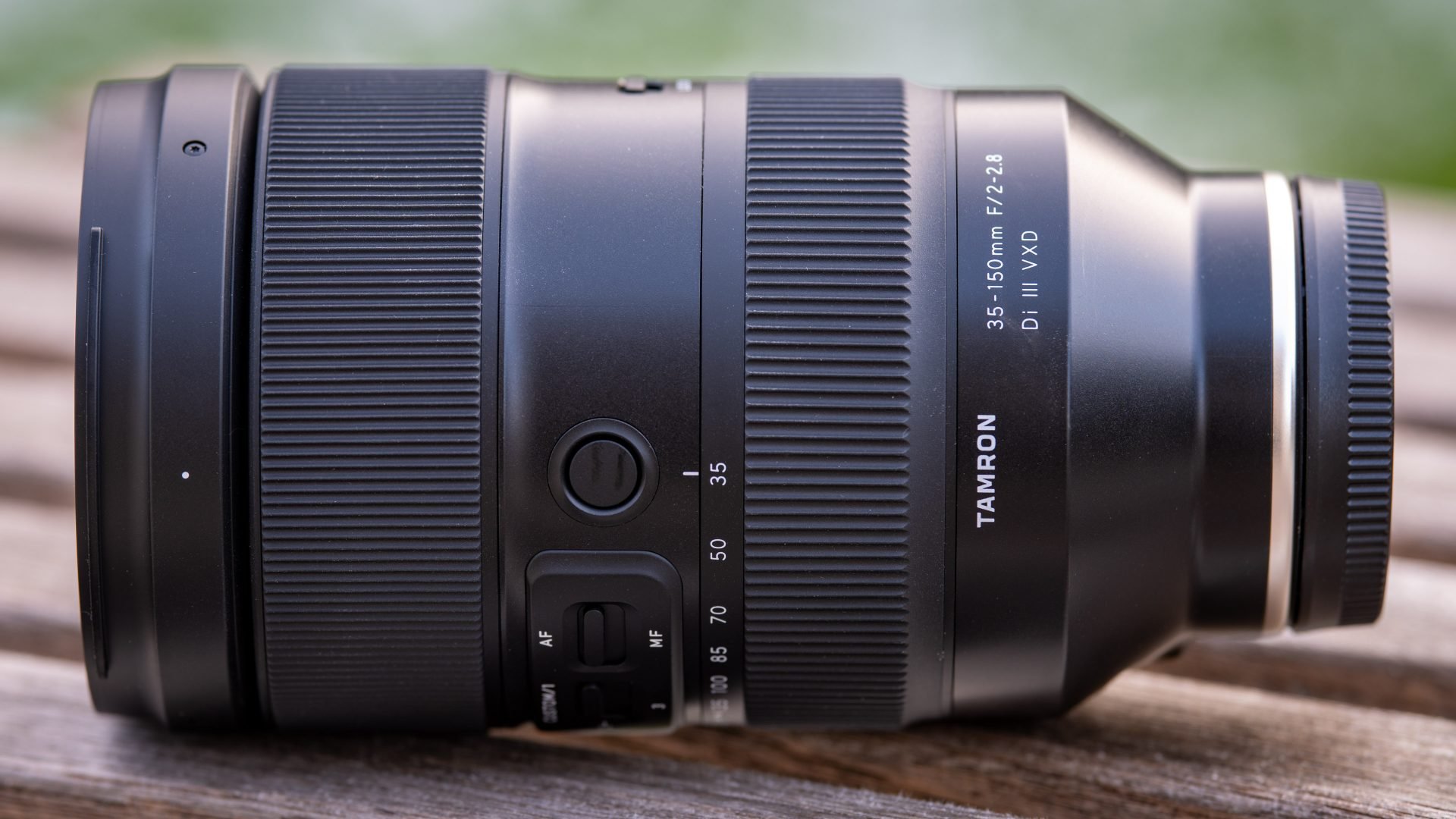
 Tamron's 35-150mm f2-2.8 Di III is a compelling all-round zoom covering the range from mild wide-angle to decent telephoto reach in one zoom lens with an extra-bright focal ratio at the short end. It has nice Bokeh and its optical performance is good to very good over the complete zoom range up into the corners of a full-frame sensor. Tamron also added extensive weather sealing and a lot of customizing options via its Lens Utility. It may not go wider than 35mm, its close-up abilities are rather limited, and contra light can reduce contrast considerably at the long end but still Tamron's new lens clearly earns a Recommended!
Tamron's 35-150mm f2-2.8 Di III is a compelling all-round zoom covering the range from mild wide-angle to decent telephoto reach in one zoom lens with an extra-bright focal ratio at the short end. It has nice Bokeh and its optical performance is good to very good over the complete zoom range up into the corners of a full-frame sensor. Tamron also added extensive weather sealing and a lot of customizing options via its Lens Utility. It may not go wider than 35mm, its close-up abilities are rather limited, and contra light can reduce contrast considerably at the long end but still Tamron's new lens clearly earns a Recommended!